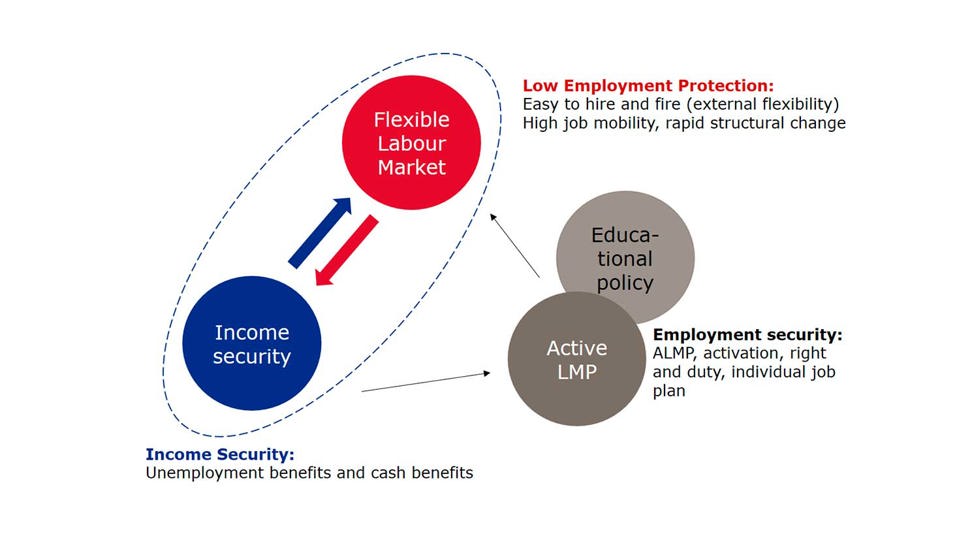
Flexicurity
The employment system in Denmark is built up around the so-called Danish flexicurity model which combines flexibility and security for the citizen.
The Danish employment system's combination of flexibility and security is often described as a ‘golden triangle’. The Danish model, known as the “flexicurity model”, combines high mobility between jobs with a comprehensive income safety net for the unemployed and an active labour market policy.

Flexible labour market
Relatively low Employment Protection Legislation (EPL) allowing employers the flexibility to reconfigure the workforce to adapt to changing market conditions (although collective agreements and legal provisions are in place). A high level of external numerical flexibility, as attested to by high levels of job-to-job mobility and worker flows in and out of employment and unemployment.
Income security
A system of income security for unemployed people with a relatively high compensation rate. Unemployment benefit is currently accessible for two years for members of an unemployment insurance fund and there are high compensation rates for low-income groups (up to 90% of previous earnings for lower-paid workers). Those who are unemployed but who are not members of an unemployment insurance fund are entitled to means-tested cash benefit, which is paid at a lower rate than unemployment benefit.
Active labour market policy
Active labour market policy aims at contributing to ensuring a well-functioning labour market. This is achieved by means of a number of measures in relation to both unemployed and employed persons who are seeking work or who wish to undergo training or education. Denmark's public expenditure on the active labour market policy is substantial. In 2019, the total expenditure on active employment measures, broken down into activation, other employment schemes, service expenditure (administration of municipal job centres) and special measures and funds, amounted to DKK 12.7 billion (2021 wage- and price level).
